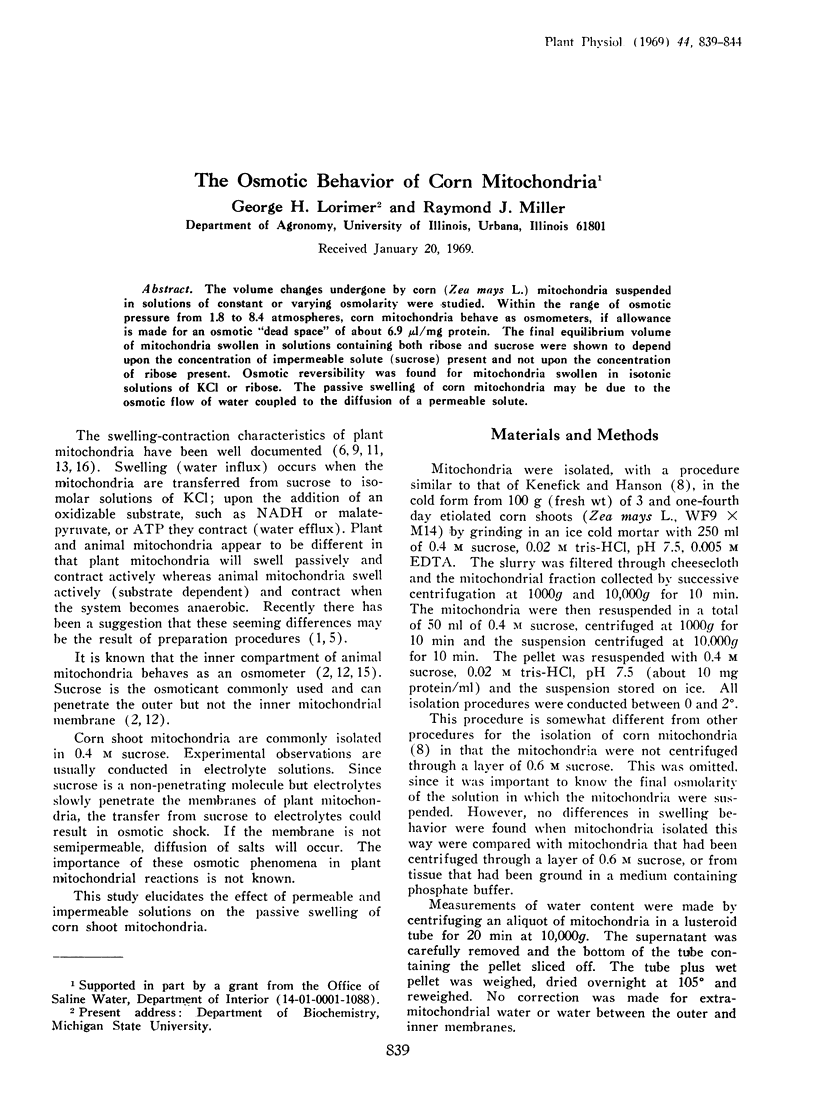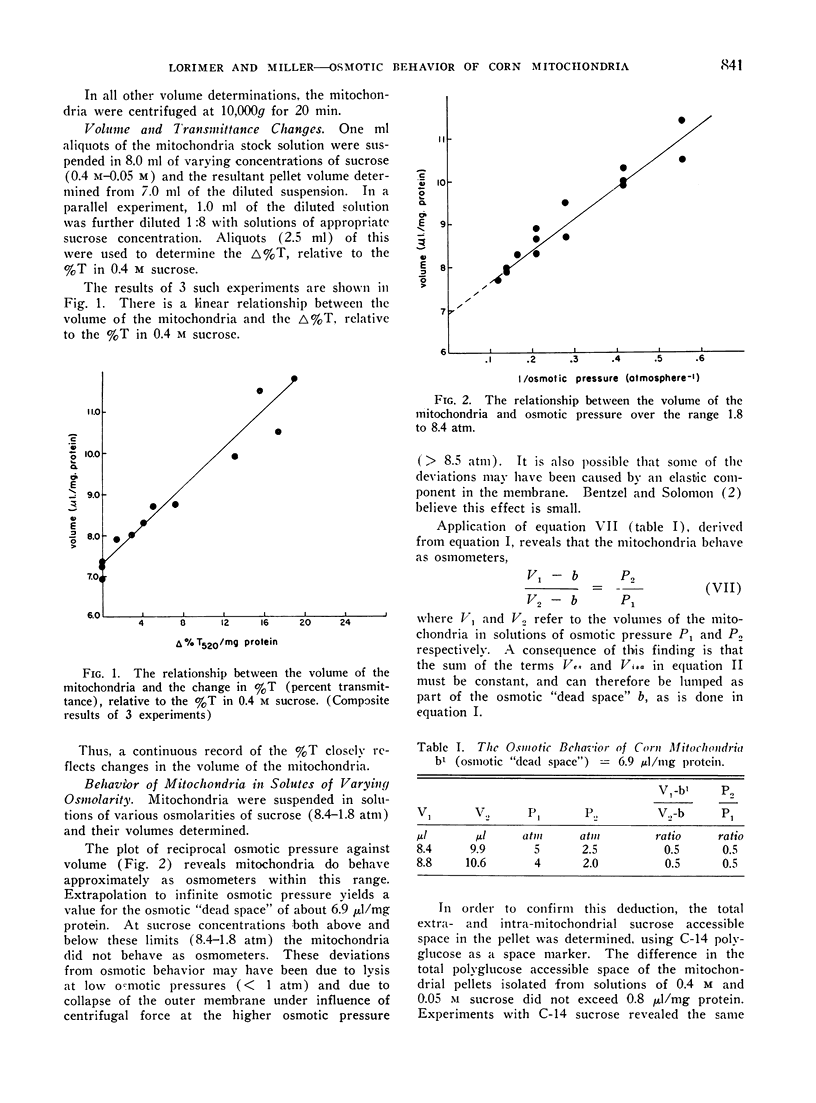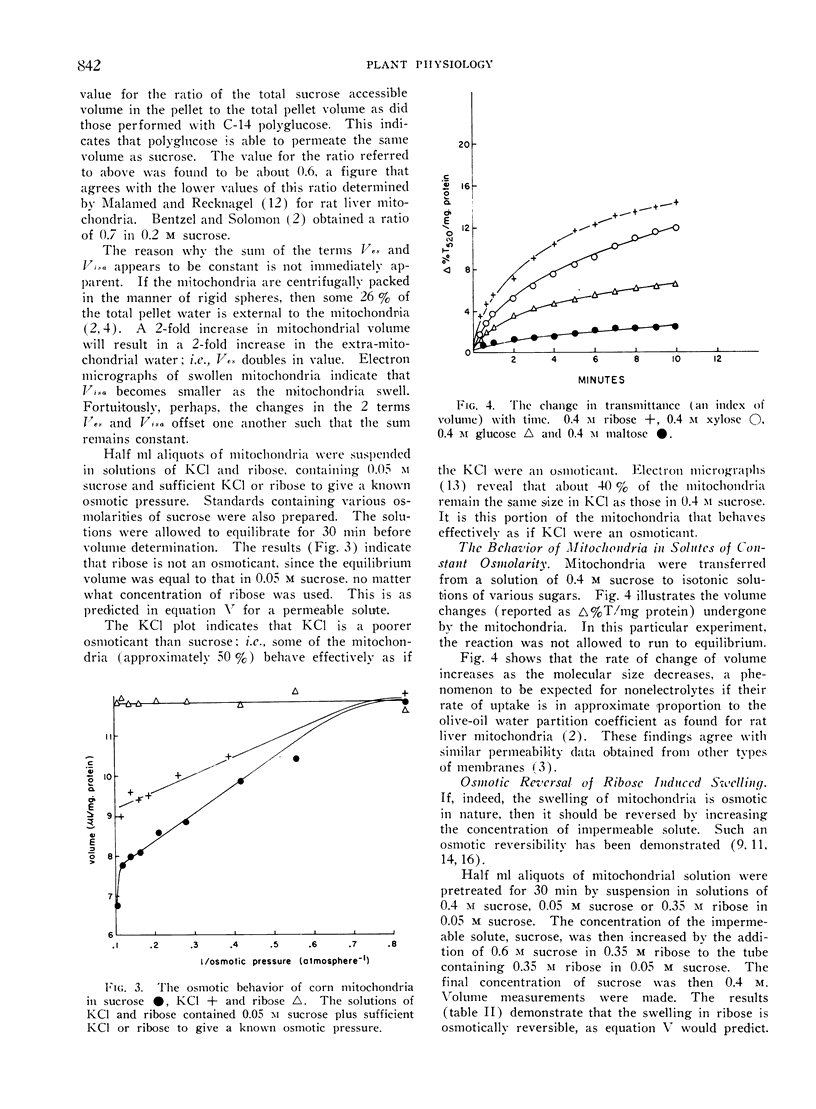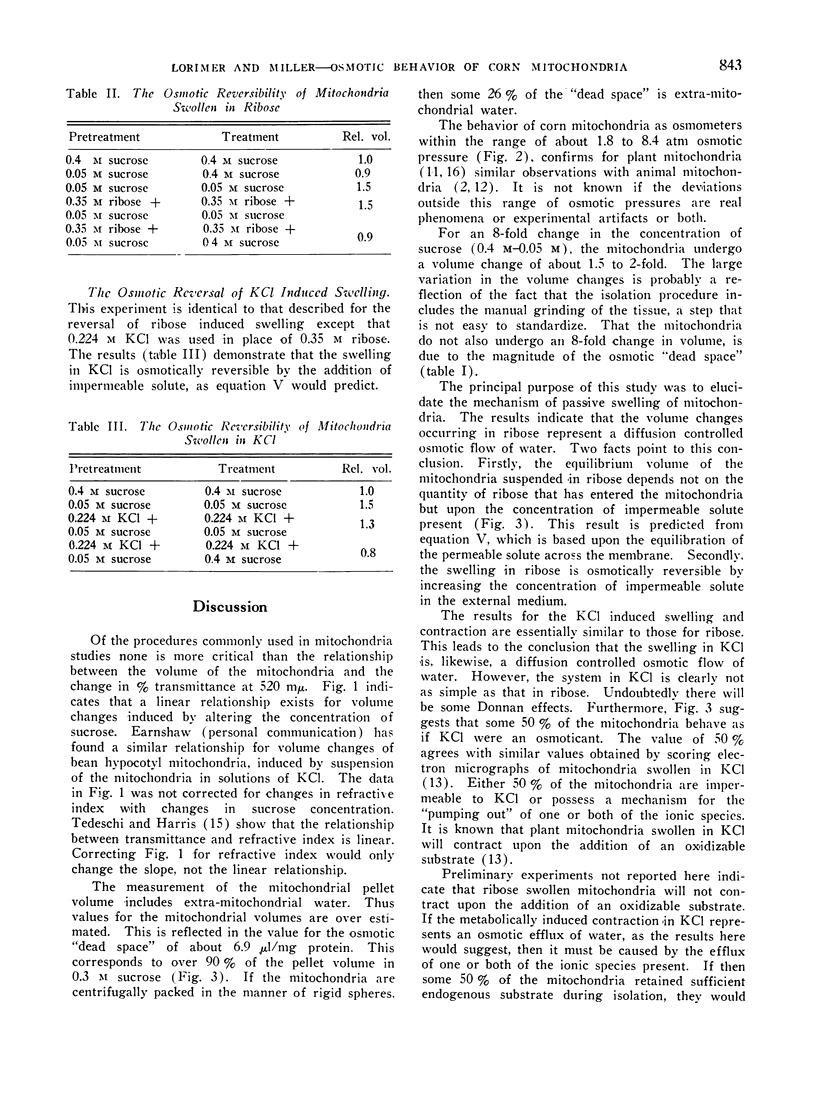Abstract
The volume changes undergone by corn (Zea mays L.) mitochondria suspended in solutions of constant or varying osmolarity were studied. Within the range of osmotic pressure from 1.8 to 8.4 atmospheres, corn mitochondria behave as osmometers, if allowance is made for an osmotic “dead space” of about 6.9 μl/mg protein. The final equilibrium volume of mitochondria swollen in solutions containing both ribose and sucrose were shown to depend upon the concentration of impermeable solute (sucrose) present and not upon the concentration of ribose present. Osmotic reversibility was found for mitochondria swollen in isotonic solutions of KCI or ribose. The passive swelling of corn mitochondria may be due to the osmotic flow of water coupled to the diffusion of a permeable solute.
Full text
PDF





Selected References
These references are in PubMed. This may not be the complete list of references from this article.
- Azzi A., Azzone G. F. Ion transport in liver mitochondria. II. Metabolism-linked ion extrusion. Biochim Biophys Acta. 1967 Jul 3;135(3):444–453. doi: 10.1016/0005-2736(67)90033-8. [DOI] [PubMed] [Google Scholar]
- Bentzel C. J., Solomon A. K. Osmotic properties of mitochondria. J Gen Physiol. 1967 Jul;50(6):1547–1563. doi: 10.1085/jgp.50.6.1547. [DOI] [PMC free article] [PubMed] [Google Scholar]
- CONWAY E. J., DOWNEY M. An outer metabolic region of the yeast cell. Biochem J. 1950 Sep;47(3):347–355. doi: 10.1042/bj0470347. [DOI] [PMC free article] [PubMed] [Google Scholar]
- Earnshaw M. J., Truelove B. Swelling and contraction of phaseolus hypocotyl mitochondria. Plant Physiol. 1968 Jan;43(1):121–129. doi: 10.1104/pp.43.1.121. [DOI] [PMC free article] [PubMed] [Google Scholar]
- Johnson J. A., Wilson T. A. Osmotic volume changes induced by a permeable solute. J Theor Biol. 1967 Nov;17(2):304–311. doi: 10.1016/0022-5193(67)90173-7. [DOI] [PubMed] [Google Scholar]
- Kenefick D. G., Hanson J. B. Contracted state as an energy source for ca binding and ca + inorganic phosphate accumulation by corn mitochondria. Plant Physiol. 1966 Dec;41(10):1601–1609. doi: 10.1104/pp.41.10.1601. [DOI] [PMC free article] [PubMed] [Google Scholar]
- LOWRY O. H., ROSEBROUGH N. J., FARR A. L., RANDALL R. J. Protein measurement with the Folin phenol reagent. J Biol Chem. 1951 Nov;193(1):265–275. [PubMed] [Google Scholar]
- Lyons J. M., Wheaton T. A., Pratt H. K. Relationship between the Physical Nature of Mitochondrial Membranes and Chilling Sensitivity in Plants. Plant Physiol. 1964 Mar;39(2):262–268. doi: 10.1104/pp.39.2.262. [DOI] [PMC free article] [PubMed] [Google Scholar]
- MALAMED S., RECKNAGEL R. O. The osmotic behavior of the sucrose-inaccessible space of mitochondrial pellets from rat liver. J Biol Chem. 1959 Nov;234:3027–3030. [PubMed] [Google Scholar]
- TEDESCHI H., HARRIS D. L. The osmotic behavior and permeability to non-electrolytes of mitochondria. Arch Biochem Biophys. 1955 Sep;58(1):52–67. doi: 10.1016/0003-9861(55)90092-8. [DOI] [PubMed] [Google Scholar]
- TEDESCHI H. Osmotic reversal of mitochondrial swelling. Biochim Biophys Acta. 1961 Jan 1;46:159–169. doi: 10.1016/0006-3002(61)90659-x. [DOI] [PubMed] [Google Scholar]


